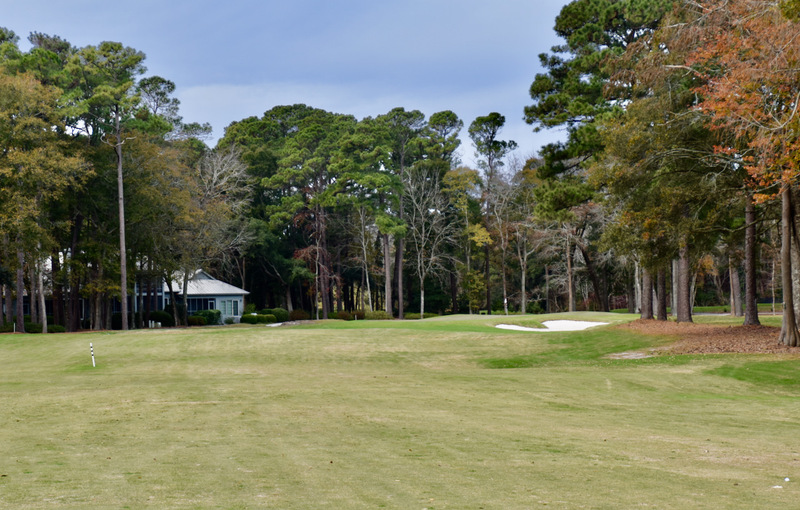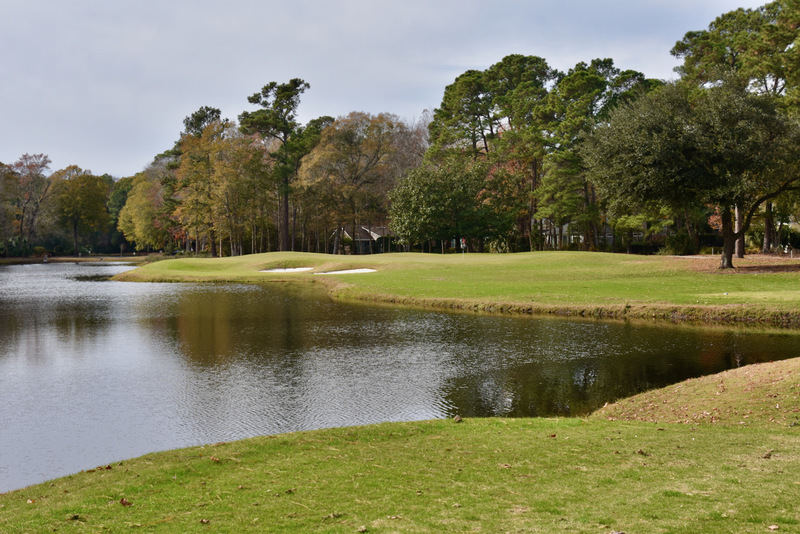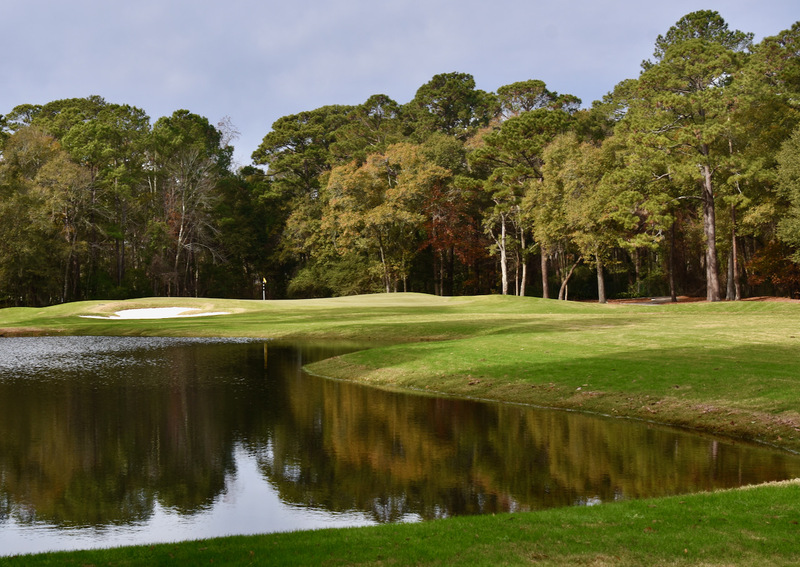On my maiden round on the revamped layout in mid-December, I found a layout that will be kinder and gentler for my game. Starting on hole #1, which I have always thought was a great “warm-up” hole anyway, especially if you stayed left of center on your drive and approach shot, it is now even gentler since Nicklaus’ architect on the scene, Troy Vincent, had the 250-yard-long bunker down the right side removed. Only the modest greenside portion of that bunker remains, guarding the right rear half. Ditto the par 4 12th hole, which brings you out toward the marsh and the iconic par 3 13th.
The 12th hole, an otherwise short and easy par 4 dogleg right, had featured one of those tee-to-green bunkers covering the right side of the hole; a ball in the fairway portion of the bunker made it virtually impossible to hold a shot to anywhere but the left front of the green. That huge bunker has now been replaced by three modest-sized fairway bunkers and one at greenside that still covers the right half of the green. Today, if you push your ball to the right, there’s a decent chance you’ll wind up in grass with a playable lie. If you should land in one of those new bunkers, you will be faced with the traditional problem of a longish approach to a tough green whose middle is guarded by a greenside bunker.
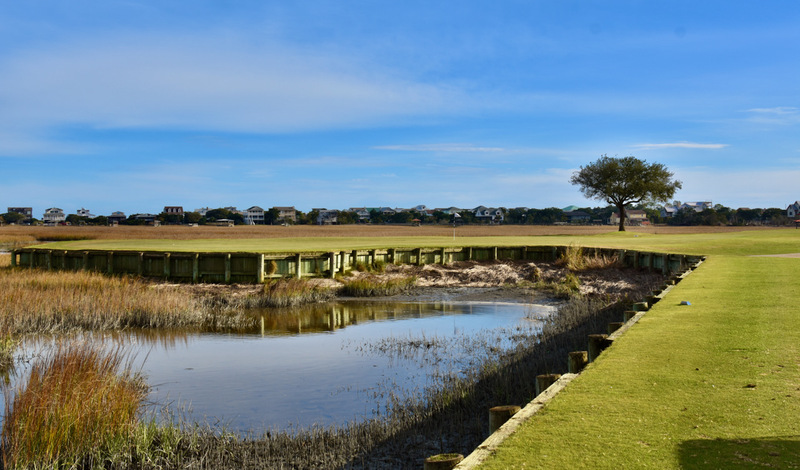 The iconic 13th hole at Pawleys -- marsh in front and behind -- was extended to the right, providing a modest bailout area. Still, wind and a green lacking in depth make it the "shortest par 5 in Myrtle Beach."
The iconic 13th hole at Pawleys -- marsh in front and behind -- was extended to the right, providing a modest bailout area. Still, wind and a green lacking in depth make it the "shortest par 5 in Myrtle Beach." As for the signature par 3 13th hole, which plays over marsh to a peninsula green from a thin strip of tee boxes along a bulkhead, I used to take some masochistic pride in the fact the green was smaller than the famous 17th at TPC Sawgrass. No longer. Nicklaus and Vincent have extended the green a little to the left and a lot to the right, providing something of a bailout area. But scant depth to the green has been added and the prevailing winds – the Atlantic Ocean is less than a half-mile beyond the green – still play tricks on your choice of clubs; if the breeze is at your back, and with the green as firm as it is, a that strikes the middle to middle-back of the green is likely to bound into the marsh behind. Members like to claim, tongue in cheek, that #13 is the “shortest par 5 in Myrtle Beach.” Despite the changes, it is likely to remain that way.
Founders International, the owners of Pawleys Plantation and 20 other golf courses in the Myrtle Beach area, had not tweaked the design of the course in the years leading up to the renovation – with one exception, the par 3 7th hole. As originally designed by Nicklaus in 1988, the green was shaped like an hourglass, running front to back. A pin position at front was relatively easy to get at with short irons off the tees; the pin was there when my son Tim got his first hole in one. But pins set in the narrow neck or slightly wider back portions of the hourglass were extremely difficult to get close to, and second shots from the bunkers or grass left and right of those locations typically led to double bogey or worse.Most likely with an eye toward speed of play, Founders widened the 7th green a few years ago and, after this summer’s renovation, the green is now even larger. Over time, the tee shot has gone from scary to intimidating to meh. That really is my only criticism of the course redo – except for the short tee box on the par 4 5th hole, where a tall tree forces us old guys to choose between a shot to the rough on the left of the tree or the bunkers to the right.
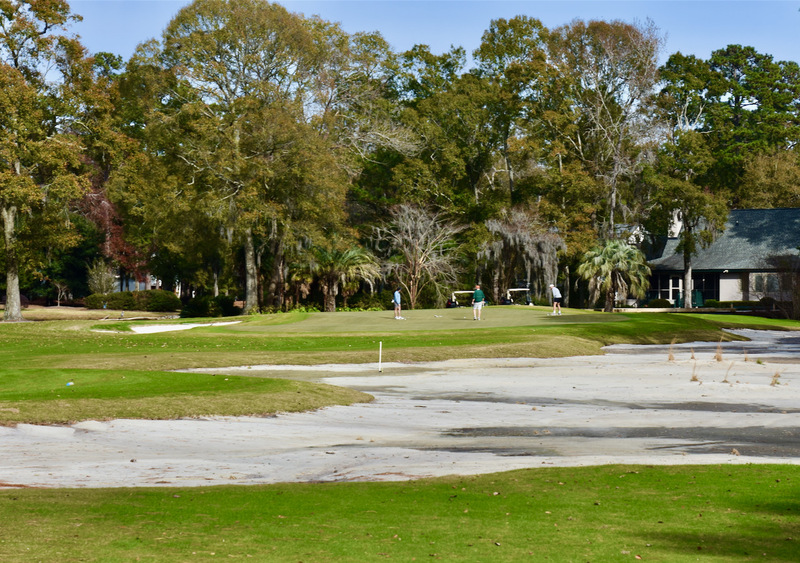 Today's 7th green at Pawleys Plantation is about half the width of its original size, circa 1989, when a middle pin was nearly impossible to get close to -- from the tee boxes or the bunkers on either side of the green.
Today's 7th green at Pawleys Plantation is about half the width of its original size, circa 1989, when a middle pin was nearly impossible to get close to -- from the tee boxes or the bunkers on either side of the green. It will take a while for the newly planted greens – TifEagle grass which withstands heat and salt well – to soften a bit. For now, pin seeking is verboten unless you are strong enough to spin a ball on linoleum. When pins are set at the front of most greens at Pawleys, the current play is to land short and take your chances on a friendly bounce onto the green or, at least, a chip or putt from inside 10 or 20 yards. When the pins are protected by greenside bunkers, equally conservative approach shots will avoid dreaded double bogies.
Pawleys is still a tough slog for those of us who don’t hit the ball more than 190 yards off the tees, but the slight softening of the layout makes breaking 80 occasionally a more realistic opportunity from what are euphemistically referred to as the “executive” tees. Younger, stronger and better players will pick their poison but should beware: Fickle winds, hard surfaces and smaller but still menacing bunkers still stand guard against aggressive shot making.
HAPPY NEW YEAR EVERYONE!




